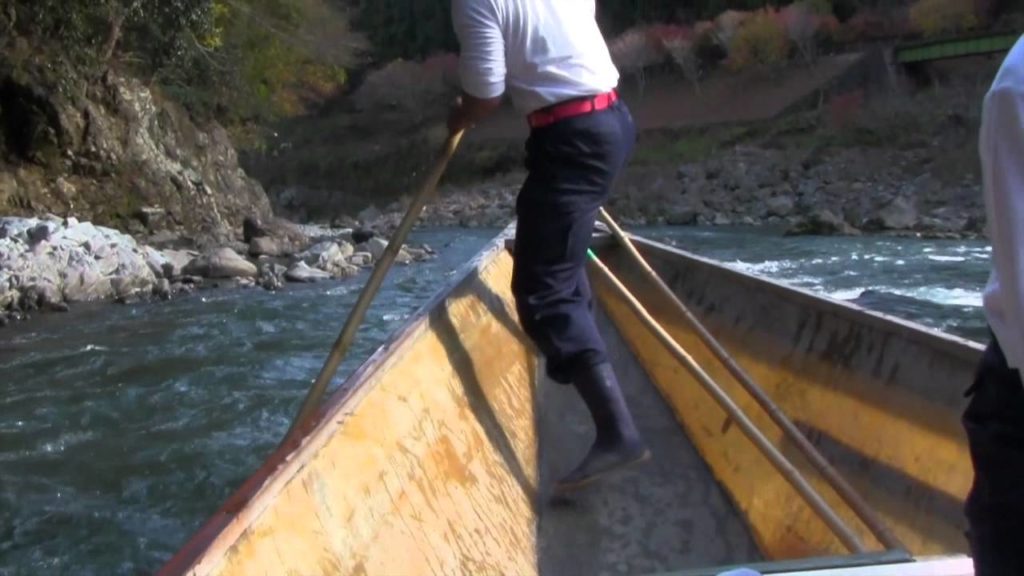The expression “Kawakudari,” a boat ride down the river, was started to be used when the history of using the Hozu-gawa River for transport began. It is a water transport whose history started when the capital was in Nagaokakyo City, even before there was a capital in Kyoto City. To help build the new capital lots of logs from Tanba, bound together into rafts, were transported down the Hozu-gawa River to Kyoto. Later the Tanba logs were in great demand and sent down the river by for the construction of Tenryu-ji Temple, Rinsen-ji Temple, Osaka Castle, and Fushimi Castle.
Not only logs, but also rice, wheat, firewood, and charcoal were transported after Ryoi Suminokura, a wealthy merchant called the “River Lord” in Kyoto, opened the ravine up for boat transports in 1606.
Not only is the scenery beautiful year-round, but the Hozugawa Ravine holds many unique points of interest, including; colossal boulders, glimpses of the surrounding mountains, mysterious deep pools, wildlife, charming flowers and trees, and intriguing geologic formations.
The Hozugawa River Boat Ride is a world famous sightseeing experience whose travel distance is 16 kilometers-long, traveling from Kameoka to Arashiyama.
Ryoi Suminokura and Hozu-gawa River: When Ryoi was 51, he decided to launch his long-cherished plan — to excavate Hozu-gawa River for the waterway from Tanba to transport abundant goods to Kyoto. In Keicho 11, 1606, he started out on the development of the Hozu-gawa River water route, where there were lots of difficult and dangerous parts to open in the mountains — many huge rocks blocking the water route and rapids. And the major waterway connection between Tanba and Kyoto had been completed at the cost of many lives and an enormous amount of money.
Not only did he open the waterway of Hozu-gawa River, but also opened Takase-gawa Canal to connect Kyoto and Osaka, and opened waterways of Tenryu-gawa River and Fuji-gawa River.
When the boat reaches Saga-Arashiyama, close to the landing point of the ride, you can see Daihikaku Senko-ji Temple. This temple was built by Ryoi to mourn for the heavy toll of lives during the excavation of Hozugawa River. There is a monument of Ryoi, too.


AloJapan.com